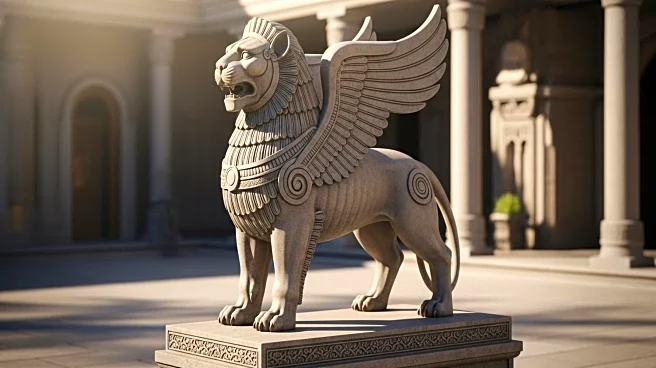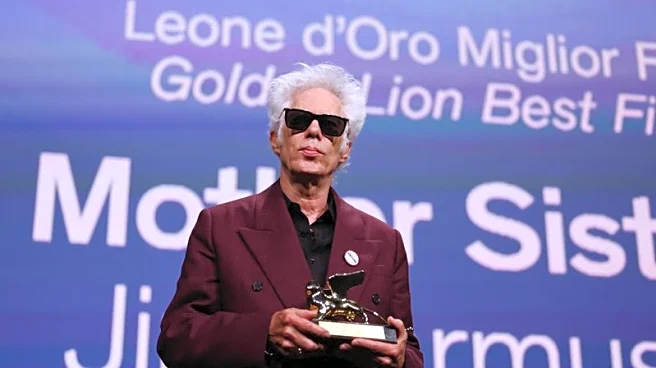What is the story about?
What's Happening?
Recent research has unveiled that the iconic Winged Lion statue in Venice's St. Mark's Piazza, long believed to have various origins, was likely crafted in China. The study, led by Gilberto Artioli from the University of Padova, utilized isotopic analysis of the bronze, revealing that the copper used in the statue originated from China's Yangzi River basin. The lion's facial styling and mane align with Tang dynasty aesthetics, suggesting it was shaped in China rather than Venice. This discovery challenges previous theories that attributed the statue's origins to regions such as Turkey, Syria, or even local Venetian craftsmanship.
Why It's Important?
This revelation has significant implications for historical understanding and cultural heritage. It highlights the extensive trade networks and cultural exchanges between medieval Europe and China, suggesting a deeper interconnectedness than previously thought. The finding may influence how historians view the spread of artistic styles and materials across continents during the medieval period. For Venice, this discovery could reshape the narrative around one of its most iconic symbols, potentially affecting tourism and cultural identity. It underscores the importance of scientific analysis in uncovering historical truths and may prompt further investigations into other historical artifacts.
What's Next?
The study may lead to further research into the origins of other historical artifacts in Venice and beyond, potentially uncovering more instances of cross-cultural exchanges. Historians and archaeologists might explore the role of Venetian merchants, such as the Polo family, in facilitating these exchanges. Additionally, the findings could spark discussions among cultural heritage professionals about the preservation and interpretation of historical symbols. Venice may consider updating its historical narratives and museum exhibits to reflect this new understanding, potentially influencing educational materials and tourism strategies.
Beyond the Headlines
The discovery raises questions about the ethical implications of cultural heritage and ownership. It challenges the notion of national identity tied to historical artifacts, suggesting a more global perspective. The study also highlights the role of scientific methods in archaeology, emphasizing the importance of interdisciplinary approaches in uncovering historical truths. This could lead to a broader acceptance of scientific analysis in cultural heritage studies, potentially influencing funding and research priorities.
AI Generated Content
Do you find this article useful?
















